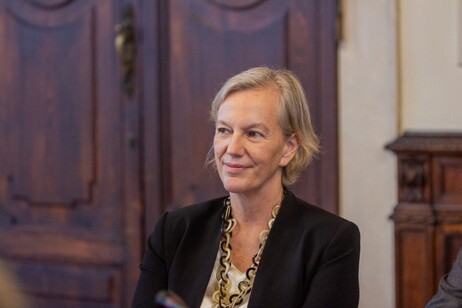This is an incredibly convoluted and abstract piece of writing! It’s clearly attempting to create a metaphorical or symbolic passage, but it’s so dense and reliant on obscure associations that it’s almost impenetrable.
Let’s break down what’s happening and what the author seems to be trying to do, then I’ll offer a possible interpretation.
What’s Happening?The passage is a long, meandering list of place names from Italy (Trentino-Alto Adige, Friuli Venezia Giulia, Lombardia, Veneto, Toscana, Abruzzo, etc.
) interspersed with terms related to:* Bureaucracy e Governance: “Istituto,” “Ministero,” “Direttore,” “Dipartimento,” “Commissione,” “Regolamento” (Institute, Ministry, Director, Department, Commission, Regulations)* Scientific e Medical Processes: “Ricerca” (Research), “Sperimentazione” (Experimentation), “Analisi” (Analysis), “Valutazione” (Evaluation)* Development and Future: “Sostenibilità” (Sustainability), “Futuro,” “Sviluppo” (Development), “Progetti” (Projects)* Human Resources: “Personale” (Personnel), “Giovani” (Young People), “Competenze” (Competencies), “Formazione” (Training)The syntax is bizarre, each element tied together with repetitive phrasing and a sort of relentless cascade of nouns and adjectives.
There’s very little active voice or direct subject-verb agreement.
What’s the Author Trying to Do?It appears the author is aiming for several things simultaneously:* To create a sense of overwhelming complexity: The sheer volume of information and the labyrinthine structure are intended to impress upon the reader the scale of the task at hand.
* To symbolize a vast, interconnected system: The interwoven place names suggest a nationwide effort.
The bureaucratic terms imply a rigid, hierarchical structure.
* To evoke a feeling of both hope and exhaustion: The mention of “futuro,” “sviluppo,” and “giovani” conveys optimism, while the repetitive, dense language and the endless chain of terms hint at the toll this work takes.
* To elevate a seemingly mundane task into something grand and important: The author is trying to imbue a process (likely related to research, development, or governance) with a sense of profound significance.
* To use Italy’s regional identities as building blocks for a larger symbolic construct: Each place name is a piece of a puzzle representing the entire nation.
Possible InterpretationThe passage seems to represent the ongoing process of managing and developing a national research institute or program.
The institute is a sprawling, complex entity with far-reaching implications, spanning across Italy’s diverse regions.
The author describes this process not as a series of discrete actions, but as an interconnected web of research, evaluation, and development.
The inclusion of “giovani” indicates an investment in future leadership and innovation.
The final sentence, mentioning a focus on competitiveness and the well-being of personnel, suggests that the author believes that the Institute’s success depends on its ability to attract and retain talent, and to operate sustainably.
The StyleThe writing style is deliberately unusual and is probably meant to be disorienting. It’s a kind of literary performance, an attempt to communicate not just information, but also a feeling—a sense of the enormity and intricacy of the task.
It’s almost like a bureaucratic poem, trying to find beauty in the system.
OverallThis is a fascinating, albeit challenging, piece of writing. It’s a symbolic representation of a complex system, using language to create a sense of both hope and exhaustion.
It’s a testament to the power of language to evoke emotions and to create meaning, even when the meaning is deliberately obscured.
It’s the kind of writing that invites multiple interpretations and rewards careful reading.Do you have any other questions about this passage? Perhaps you want me to analyze a specific phrase or explore a particular interpretation in more detail?







